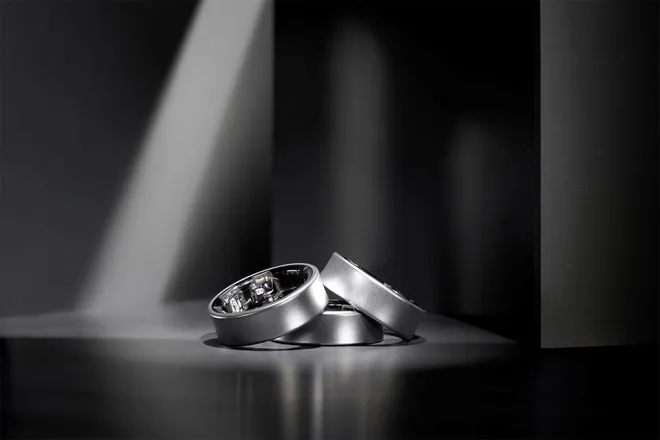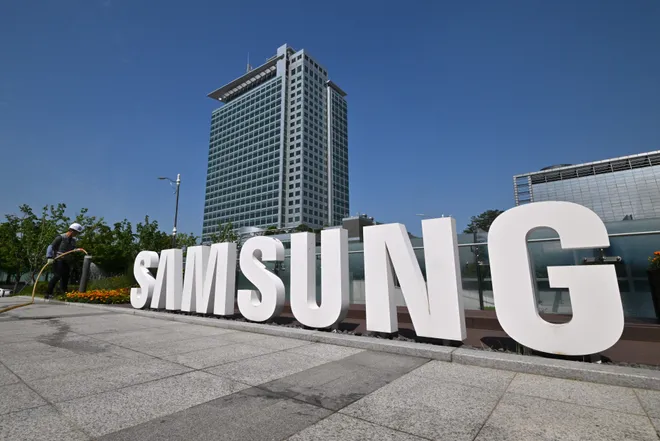Want to improve your health? Samsung says, 'Put a ring on it!'
PARIS – Samsung bounded into a new wearables segment Wednesday with the Galaxy Ring, an on-the-finger tracker that monitors physical activity, heart rate, sleep and other health indicators. The electronics giant also introduced the Galaxy Watch7, the latest addition to its well-established wrist-worn wearable line, and the Galaxy Watch Ultra, an all-new smartwatch for adventure-minded enthusiasts.
Thanks to a powerful new sensor suite, both of the new watches are more precise than previous Galaxy Watch generations. And because of some new tech built into the platform, they’re also able to glean novel new health insights, including a glucose-related barometer that could help folks stave off chronic conditions like diabetes.
Samsung is first big smartwatch maker to create smart ring
Smart rings may be new to Samsung, but the consumer electronics maker didn’t create the category. On-the-finger wearables have been available for several years, primarily from smaller startups like market leader Oura.
With its new wearable, Samsung becomes the first name-brand smartwatch maker to throw its hat into the (smart) ring. That could help spark a new wave of sales for this small but fast-growing slice of the $100 billion wearables market. And that, in turn, may compel other established wearables makers like Apple, Fitbit/Google and Garmin to add smart rings to their lineups.
Galaxy Ring and Galaxy Watch are better together
Complementing a smartwatch with a smart ring isn’t just about offering consumers more tracker options. If both devices are from the same company – like the Galaxy Ring and Galaxy Watch series are – and they both stream data into the same smartphone app – like the Samsung Health app – then they can actually improve tracking quality by working together.
When the Galaxy Ring and Galaxy Watch are both engaged, the Health app can analyze both data streams to help paint a more accurate picture. The app could also lean more heavily on whichever device is better suited for a particular situation.
And that’s just for starters.

“It’s early days, but we’re already finding that by combining the strengths of each of the devices we can do a lot of interesting things,” Dr. Hon Pak, vice president and head of Digital Health for Mobile eXperience Business at Samsung Electronics, told me. “We’ve shown, for example, that when you wear the Ring and the Watch, we are much better at estimating sleep state performance.
“We’re also looking into things like triangulating different signal positions and motion so that, for example, we can be sure you’re doing the right exercises, and doing them correctly.”

When you’re playing a sport, for example, the Ring may produce more reliable data because it tends to lay more evenly on the skin while in motion. On the other hand, smartwatches typically work better when it’s cold outside. That’s because blood vessels don’t constrict as much in wrists as they do in fingers.
Additionally, you can eliminate annoying gaps in activity tracking that happen whenever you toss your smartwatch onto the charger. With both the ring and watch, you can stagger charging so at least one device is always monitoring your health. That shouldn’t be too difficult to manage, as the Galaxy Ring should last up to a week between charges, according to Samsung.
New smartwatch capabilities
A newly designed sensor platform called the BioActive Sensor is what gives the Galaxy Watch7 and Galaxy Watch Ultra the ability to add new health metrics. You’ll find the sensor complex on the skin-facing underbelly of both new watches.

One of the most consequential new metrics may be a powerful predictor of life-changing conditions like diabetes.
The watches don’t offer real-time changes in glucose levels, like continuous glucose monitors, or CGMs. So they won’t help people manage diabetes. But they can help healthy folks assess their risk for diabetes. And they can monitor the impact of lifestyle changes on their risks.
Voice scams:Don't let AI voice scams con you out of cash
To do this, Samsung complemented the tiny green, red and infrared LEDs with new colors that give the sensors a peek at things they haven’t been able to see before.
To assess diabetes risk, the new watches track levels of a byproduct that the body produces when it takes in more sugar than it can process. Concentrations of the byproduct, called Advanced Glycation End Products, or AGEs, don’t change much from day to day. But with diet and exercise, healthy people can lower levels of AGEs over time.
What to choose?
Clearly, there’s a lot to consider. The new watches offer powerful new metrics. Plus, they come with all the smartphone companion apps you’d expect to have on your wrist.
But the Galaxy Ring runs for up to a week between charges. And it can be more reliable on core health metrics in some circumstances.
If you don’t mind splurging – the Galaxy Ring starts at $399.99, $299.99 for the Galaxy Watch7 – then there are no tradeoffs. Quite the opposite, in fact. Because in many ways, the new ring and the new watch actually work better together.
USA TODAY columnist Mike Feibus is president and principal analyst of FeibusTech, a Scottsdale, Arizona, market research and consulting firm. Reach him at mikef@feibustech.com. Follow him on Twitter @MikeFeibus.
The views and opinions expressed in this column are the author's and do not necessarily reflect those of USA TODAY.
Disclaimer: The copyright of this article belongs to the original author. Reposting this article is solely for the purpose of information dissemination and does not constitute any investment advice. If there is any infringement, please contact us immediately. We will make corrections or deletions as necessary. Thank you.







